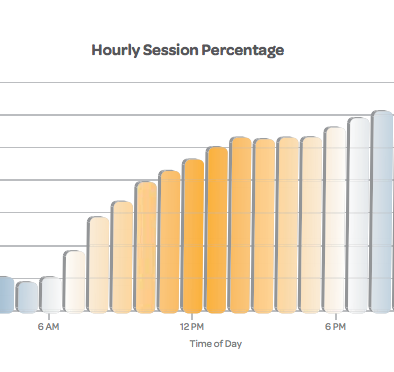A new study by The Hartman Group looks at how social media is changing the way we engage with food, including purchasing, preparation and consumption. According to the study, “Social media changes our food behavior” and “indulges our curiosities and provides an avenue for the safe exploration of new restaurants, cuisines and techniques.”
The vast majority of online adults in the U.S. use social media regularly, with 82% visiting social network sites monthly. Once there, many are engaging with food related content: nearly half of online adults (49%) say they learn about food via social networking. 40% of online adults say they learn about food via websites, apps or blogs, and 9% of of those online (nearly one in ten) say they downloaded a mobile food app in the past year.
How does online consumption of food-related information compare to print? Nearly half (46%) of online adults spend more time reading about food from online sources than from print sources, while 31% are equally engaged with both online and print. For Millennials, online media resources have overtaken print (magazines, cookbooks) and food TV shows as their most valued sources of food inspiration.
Food is traditionally experienced through touch, taste, and smell. As use of digital and social media increases, consumers are becoming increasingly visual, relying on pictures and social recommendations to learn about food. One in four of online adults (25%) are inspired by recipe websites or recipe phone apps, and 17% are inspired by restaurant review websites or similar phone apps (in comparison to the 31% who are inspired by food shows they watch on TV).
Social technology is not only affecting how people seek food information, but is also becoming part of the dining process itself. Nearly three in 10 (29%) of respondents have used a social networking site while eating or drinking at home in the last month; 19% have done so away from home. Almost one-third (32%) of consumers have either texted or used a social networking site or app in the last month while eating or drinking; for Millennials, this number jumps to 47%. According to the study, “lunch is by far the most common locus of online-social eating.”
The study’s conclusion: “Consumers primarily use social media to interact with friends and family. However, they are also discovering, learning, sharing and talking about food online.” They will engage with food brands and companies in this space, but they “want to hear from people who eat and cook food more than they want to hear from the entities who sell.” Brands will have to provide meaningful content, whether it’s useful information, money saving deals or entertainment.
The study was based on an online survey of 1,641 adult US consumers (ages 18- 64 years) in December 2011.


